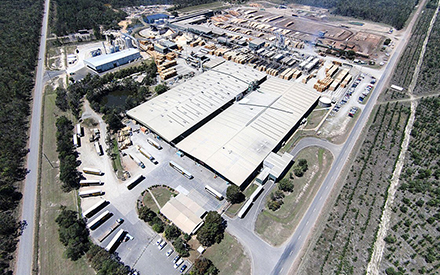The causes of the nation’s current timber shortage have been widely described as “the perfect storm”. The description is probably correct. The causes have been identified as the success of Homebuilder, a spike in the price of timber exported from Australia, and delays in timber being imported into the country due to COVID restrictions. Source: Timberbiz
Record low interest rates can be added to that list.
The effect of this perfect storm has, in South Australia at least, been described as a “Valley of Death” for the building industry.
It’s not hyperbole; it’s a fact, and not limited to SA.
Smaller builders are reportedly struggling to access building materials.
There are also reports of housing projects being started, and then left unattended simply because there is little or no supply of timber.
It’s almost ironic. The Federal Government’s Homebuilder scheme, which was launched to support more than 1.14 million jobs, including sole-trader builders, seems likely to bring many to their knees.
Homebuilder has of course finished and the boom in new home approvals will taper off, but as Tim Woods from IndustryEdge pointed out in a briefing for the Frame and Truss Manufacturers Association, that still leaves a massive pipeline of building work left to complete.
SA-Best MP Frank Pangallo, who is also a member of a select committee investigating the state’s timber industry, is concerned too much timber is going overseas because of the better profits.
SA-Best has called an emergency summit on 2 June with industry stakeholders to develop a blueprint to avoid the crisis from worsening in SA at least.
Those invited to attend the summit include key industry associations such as the Master Builders Association of SA, the Housing Industry Association, the Plumbers Association of SA and National Electrical Contractors Association, some of the state’s leading timber producers and suppliers, and SA’s largest homebuilders.
Other states will most likely be paying close attention to what may come from that meeting.
So will the building industry.
“We have the ludicrous situation in South Australia where Forestry SA recently rejected a tender from a local sawmill – Morgan’s at Jamestown – to supply government-owned timber from the Mount Lofty Ranges. We need to know if that contract went to a company that exports to China and elsewhere and was the decision made entirely on dollars.
“We also need to know whether sawlog from the State’s South East is also finding its way to the lucrative overseas markets. If this is happening, and I am of the belief it is, our Federal and State Governments need to step in immediately to save jobs and business here from collapse. The priority must be local.
“Already there is genuine fear many tradies won’t have incomes after July and many businesses will be forced to start shedding jobs by September or October,” Mr Pangallo said.
Timber Queensland’s CEO Mick Stephens said the industry is doing everything possible to increase supply in an overheated housing construction market, with some Queensland businesses forecast to double production volumes in the near future.
Hyne Timber, for example, is currently removing a production bottleneck at their Tuan mill in Maryborough by installing a new continuous drying kiln which will see a significant lift in output. This increase will also help to lift production at their new Glulam factory in Maryborough.
Softwood sawmiller AKD is also investing to improve product quality and output, including moving to a double shift at their Caboolture site from July 2021.
“AKD recently signed a long-term log contract in Queensland with HQPlantations for additional logs and once new kilns are installed at their Caboolture sawmill mid next year, their volume will increase further,” Mr Stephens said.






